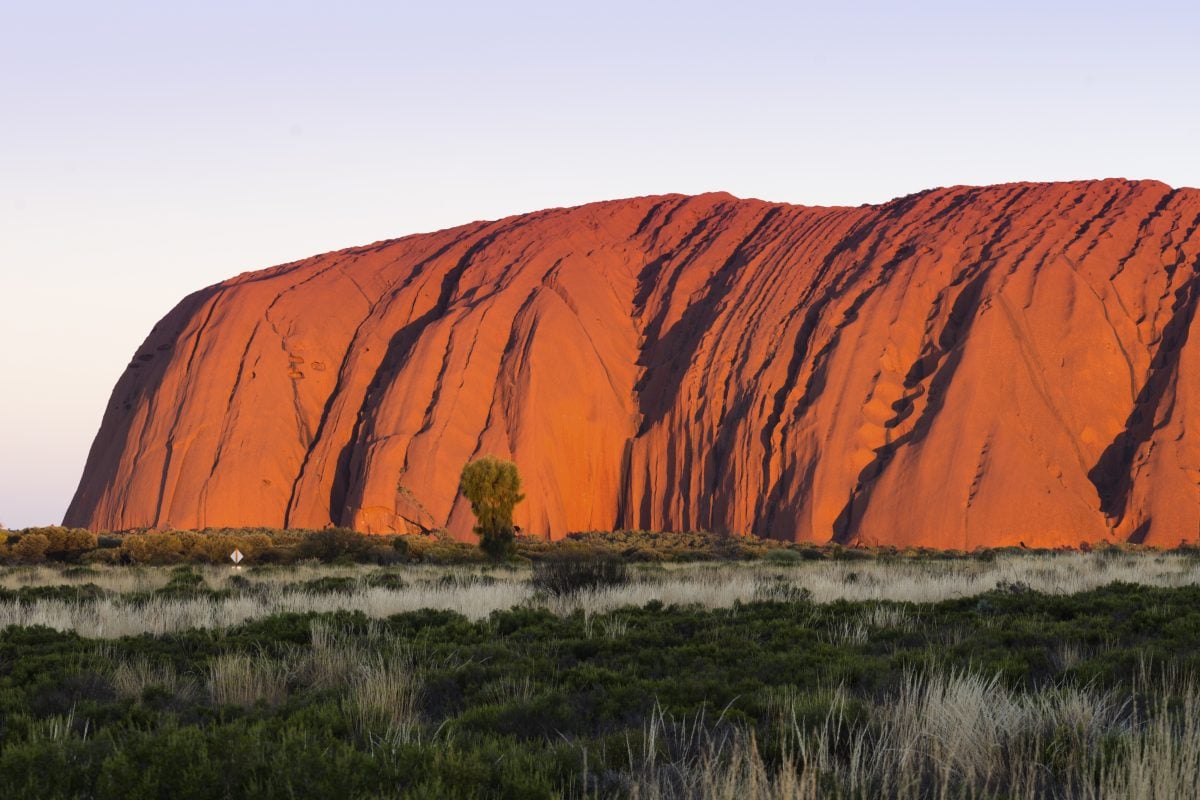
As the sun set on Saturday, October 26, 10 shadows were cast at the base of Uluru.
Eight of those shadows belonged to the last tourists to ever legally scale one of Australia’s most sacred sites. They held hands and dawdled, prolonging a chapter in our nation’s history that Indigenous Australians have been attempting to close for decades.
The other two belonged to park rangers, whose job it was to usher them down.
Their safety was put at risk by eight climbers competing for the status of ‘last’, proud to have climbed Uluru at the final opportunity, despite knowing – of course they knew – the offence it caused the traditional and rightful owners of the land.
A sign, only metres from where the climbers flung up their arms in triumph, read: “The climb is not prohibited but we ask you to respect our law and culture by not climbing Uluru. We have a responsibility to teach and safeguard visitors to our land. The climb can be dangerous. Too many people have died while attempting to climb Uluru.”
Over the years, the Anangu people have overseen the death of 38 Australians, with dozens more seriously injured.
While tourists come and go, it is the traditional custodians who are left with the scars of death, a source of great sadness.
And it would seem the louder the Indigenous community have asked that people not climb one of their most sacred sites, the more have decided they ought to.
In the final months of the climb being available to the public, swarms visited from all over the country, with others travelling internationally, intent on not missing out on the opportunity.

Top Comments
I went there in September as part of a longer outback trip with my family and 3 other families. Ours was the only one that did not climb.
My husband would have if he was not scared of heights.
I have never been more angry or hating on my partner or his friends. My rage at watching them
Take 10 year olds up there with beers in their bags to toast at the top was all a bit much. My son ( 12 ) told his mates He would not go as it was disrespectful. They told him it was the best thing they ever did.
We walked the base which was nice but the rage was firing in me the entire time.
So much disrespect and entitlement. At the same time - they did also meet an indigenous family broken down later on our trip and went all out to help them - driving the kids home and helping them out so our friends are not total bastards.
When I don’t get is the National sense of entitlement of Uluru. I have never been there before, I have no connection. What right to I have to dictate to the actual owners?
This government again has shamed us and showed their stripes.
Whilst I fully support the closure of Uluru, I'm not sure what significance the PM being there actually would achieve and feel this articul is quite misguided in what the PM was actually doing instead.
The PM was in Perth for Telethon which is a bit more that just a "charity event". This year it raised over 40 million for the Telethon Institute which will go towards research into childhood illnesses and disease.
He also supported the Australian Netball team defeat NZ - a major triumph for women's sport.
So was Telethon and Netball more important than standing around watching the last people walk on Uluru, I don't know but I think they are both very valuable use of the PMs time.
Perhaps the author needs to think about what they were actually trying to achieve by this article. I for one am unsure.
Would also be great to see an article on Mamamia on the Australian Diamonds fantastic win.
The article isn’t about the absence of the PM standing around to watch the last people walk up Uluru, but to join in and unite with the Indigenous community to celebrate the closure of the Rock to climbers as well as the significance of Uluru, given that the date is symbolic to the handover of Uluru to the Anangu community 34 years ago. While the events the PM attended were of interest, I think it was more important for him to show respect and unity towards the Anangu community by being present at the ceremony. The fact that he dismissed it as being about tourism in his comments to the public further shows his lack of respect and ignorance towards Indigenous Australians.
Agreed.
What should have been a celebration finally respecting the wishes of the Anangu people and the history behind it all turned very very quickly into a cheap political dig.
Sorry, but I (and many many other Australians) think that this historic moment should have been marked by the Prime Minister of this nation. The significance of this close is a lot more important than what Morrison was doing. I don't think a telethon or a sporting event, things that happen all the time, are nearly as important as this moment in Indigenous recognition and land rights. And, with the division that has been seen on this issue, the PM should have really endorsed it and let the Anungu people know that their legal rights will be acknowledged by this nation. Let's face it, he didn't go because he didn't want to upset his base, many of whom do not respect Aboriginal land rights.
Your disagreement with the ‘Uluru protestors’ is irrelevant. The land owners have decided they don’t want people climbing their rock